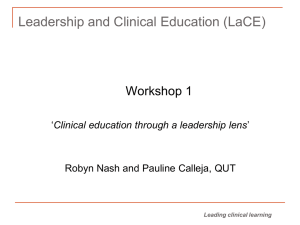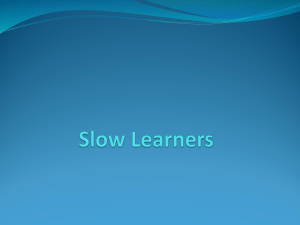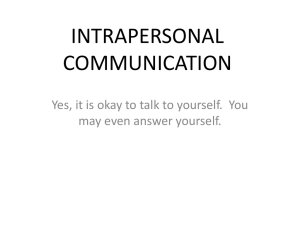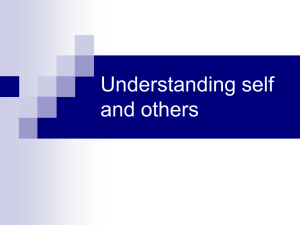Providing Feedback
advertisement
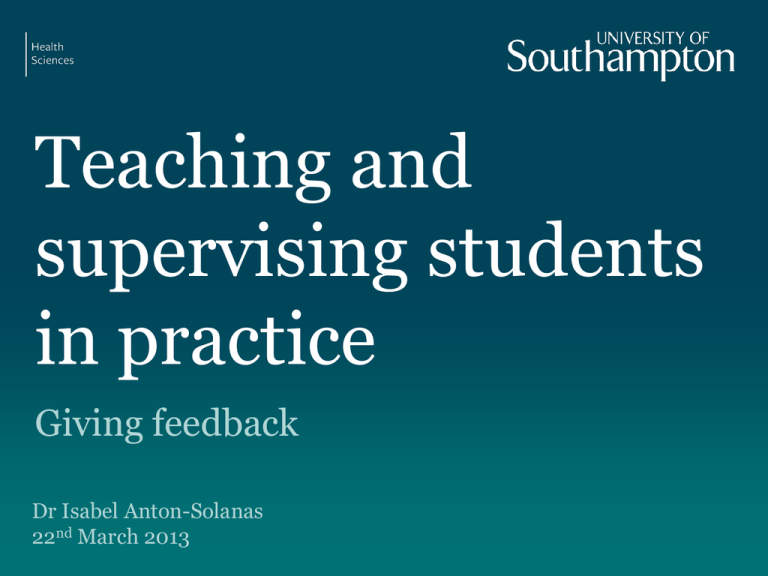
Teaching and supervising students in practice Giving feedback Dr Isabel Anton-Solanas 22nd March 2013 Session aims To consider the best ways to give feedback To discuss how feedback can contribute to learner development 2 Why should I learn about feedback? • Issues of inconsistency and a lack of ability in giving accurate feedback on professional values and behaviours have been identified(Fitzgerald et al 2010). • Students complain that it can be difficult to get their mentor to give them constructive criticism (Gray and Smith 2000). 3 Why should I learn about feedback? • Mentors often describe challenges in terms of providing negative feedback, both oral and written, and maintaining student relationships (Clynes 2008). • A number of factors such as insufficient student contact time, busy units and inadequate preparation for the role were viewed as inhibiting the feedback process (Clynes and Ratfery 2008). 4 Questions for discussion Questions for discussion 1. What is feedback? 2. What is the role of feedback in teaching and evaluation in practice experiences? 3. Why do we avoid giving feedback? 4. What characterises effective feedback? 5. What problems do we commonly encounter when giving feedback? 6 Brainstorm Brainstorm and list ideas to address: Why we should give feedback to learners? How not to give feedback How to give feedback 8 Defining feedback What is feedback? • Communication to another person which gives information about how s/he affects and is perceived by others. • A way of helping another person consider changing his/her behaviour. • A way to enhance the learning process. Feedback should be given in a way that the receiver can HEAR it, UNDERSTAND it and CHOOSE TO USE it or not to use it 10 Key elements of feedback Time “Praise sandwich” (Hinchliff 1999) Privacy Balance (too much / too little) Use time as learning situation Evidence from practice Do not generalise (“you’re brilliant”) Do not compare to other students Be clear Offer solutions 11 Please consider… 1 • Make it clear that the aim is to be helpful and constructive 2 • Direct feedback to behaviours that can be changed 3 • Focus on the subject or behaviour, not the person 4 • Be descriptive of what you observed, not evaluative 5 • Explain the impact and consequences of the actions/behaviour 6 • Take into account the receiver’s needs, as well as your own 7 • Be genuine and definitely not sarcastic or rude 8 • Remember that what you say, see and hear is confidential 12 Non-violent communication Non-violent communication (NVC) • Concept created by Marshall Rosenberg in order to help people exchange the information necessary to resolve conflicts and differences peacefully. • Four components: – Observation: The facts (what we see, hear or touch) – Feelings: Emotions or sensations, free of thought/story – Needs: As distinct from strategies to meet those needs – Request: For a specific action, free of demand. 14 Learning contract Definition of learning contract • Short written agreement between a learner and a facilitator outlining: – What the learner will learn – How the learning will be accomplished – In a specific period – How the learning will be assessed • Allows learners to take responsibility for their learning • Learners are encouraged to be involved in creating, implementing and evaluating this learning. 16 Other theories and resources Other theories • Johari Window: Improve self-awareness • Conscious Competence Model (Howell 1982) • Reflection on or in practice (Schon 1987) • Online resource: – www.businessballs.com 18 Conscious Competence Model 19 Johari Window Known to self Not know to self Known to others Open/free area Blind area Not known to others Hidden area Unknown area 20 Johari adjectives 21 References • Clynes, M. (2008) Providing feedback on clinical performance to student nurses in children’s nursing: challenges facing preceptors. Journal of Children's and Young People's Nursing 2(1): 29-35. • Clynes, M. and Ratfery, S. (2008) Feedback an essential element of student learning in clinical practice. Nurse Education in Practice 8(6): 405-11 . • Fitzgerald, M., Gibson, F. and Gunn, K. (2010) Contemporary issues relating to assessment of pre-registration nursing students in practice. Nurse Education in Practice 10(3): 158-63. • Grey, M. and Smith, L. (2000) The qualities of an effective mentor from the student nurses perspective: Findings of a longitudinal qualitative study. Journal of Advanced Nursing 32(6): 1542-1549. 22




